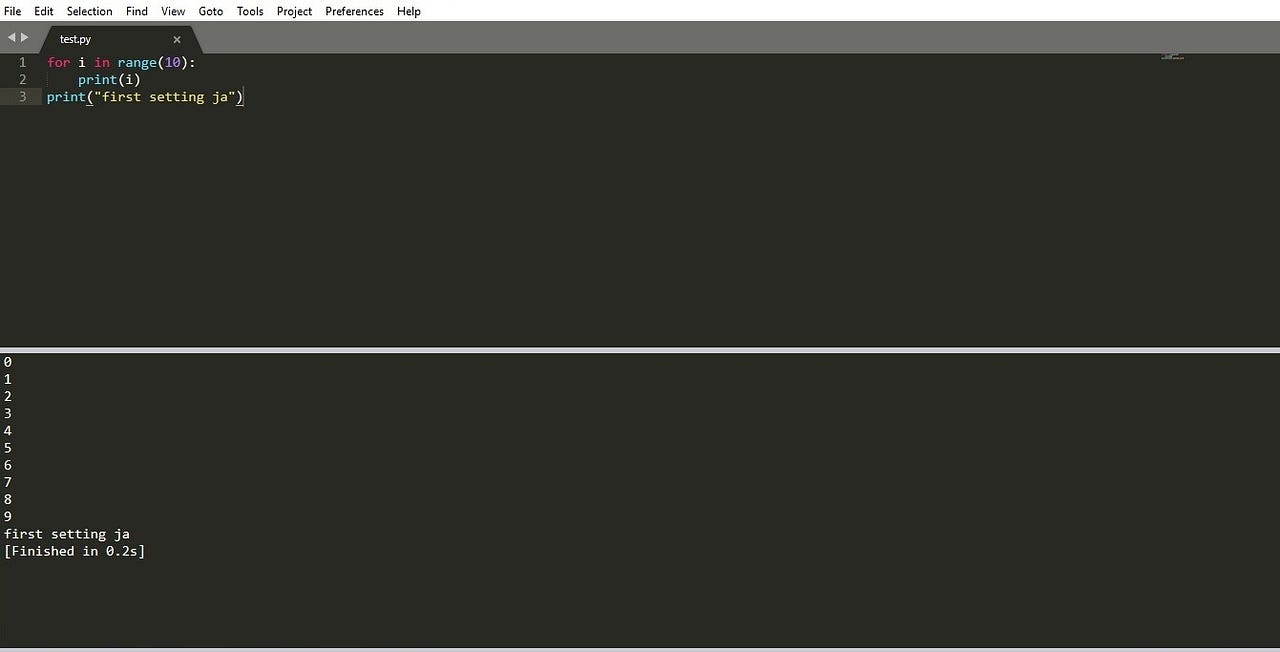
- Setup sublime text for python how to#
- Setup sublime text for python install#
- Setup sublime text for python code#
Next, add the Sublime Text repository with: sudo zypper addrepo -g -f https: ///rpm/stable/x86_64/sublime-text. To do this, first, run the command below to add the GPG key: sudo rpm -v - import https: ///sublimehq-rpm-pub.gpg Installing Sublime Text on openSUSE is made easy thanks to the Zypper package manager.
Setup sublime text for python install#
Once it's added, update the package list and install Sublime Text by running: sudo dnf updateįor removing Sublime Text, run: sudo dnf remove sublime-text Installing Sublime Text on openSUSE

Then, add the repository for Sublime Text with: sudo dnf config-manager -add-repo https: ///rpm/stable/x86_64/sublime-text.repo Sudo rpm -v - import https: ///sublimehq-rpm-pub.gpg Once it's added, update the repository and install Sublime Text with: Server = https: ///arch/stable/aarch64" | sudo tee -a /etc/nf Then, add the repository by running: echo -e "

You can do this using the following command: curl -O & & sudo pacman-key -add sublimehq-pub.gpg & & sudo pacman-key -lsign-key 8A8F901A & & rm sublimehq-pub.gpg On Arch Linux, you can install Sublime Text using pacman. If you wish to remove Sublime Text from your system, run: sudo apt remove sublime-text Installing Sublime Text on Arch Linux Now, enter the following command to add the GPG key: wget -qO - https: ///sublimehq-pub.gpg | sudo apt-key add -Īdd the Sublime Text repository to the system with: echo "deb https: /// apt/dev/" | sudo tee /etc/apt//sublime-text.listįinally, update the APT sources and install Sublime Text by entering: sudo apt update
Setup sublime text for python code#
Restart Sublime and select any poorly formatted python code and press ctrl+alt+f and the code you selected should be reformatted according to the Python style guidelines.
Setup sublime text for python how to#
Also see this tutorial.For this, first, open the terminal. How To Setup Sublime Text For Python Mac Replication Then open Sublime Text and as always open package control > Install package and search for package named PyYapf Python Formatter and install it. Replace C:\Program Files\Sublime Text 3\ with the directory where you find subl.exe. Doing this around two times, it will come natural in Edit > New > C:\Program Files\Sublime Text 3\ > OK. from the command line and repeat all steps from the Solution section. To set up a new project, start out with subl. You can (i) switch between projects in no time with CTRL+ ALT + p and (ii) have the related virtual environment among your build systems. This setup reveals its strength when you work on several projects in parallel. If not, please drop me a message or leave a comment! Usage Replace example_env with the conda env you want.

Insert the snippet below to define a build system for the project.

CTRL+SHIFT+p type browse and select Preferences: Browse packages.Add a new project to Project Manager with the command palette via CTRL+SHIFT+p > Project Manager: Add new project.Add C:\Program Files\Sublime Text 3\ (or wherever subl.exe resides) to your system environment variables, open cmd in the project directory and open Sublime with subl.Note the name of your conda env or create a new one conda create -name example_env python=3.8 -y.May look like many steps, but can be done in Package Control: Install Package >


 0 kommentar(er)
0 kommentar(er)
